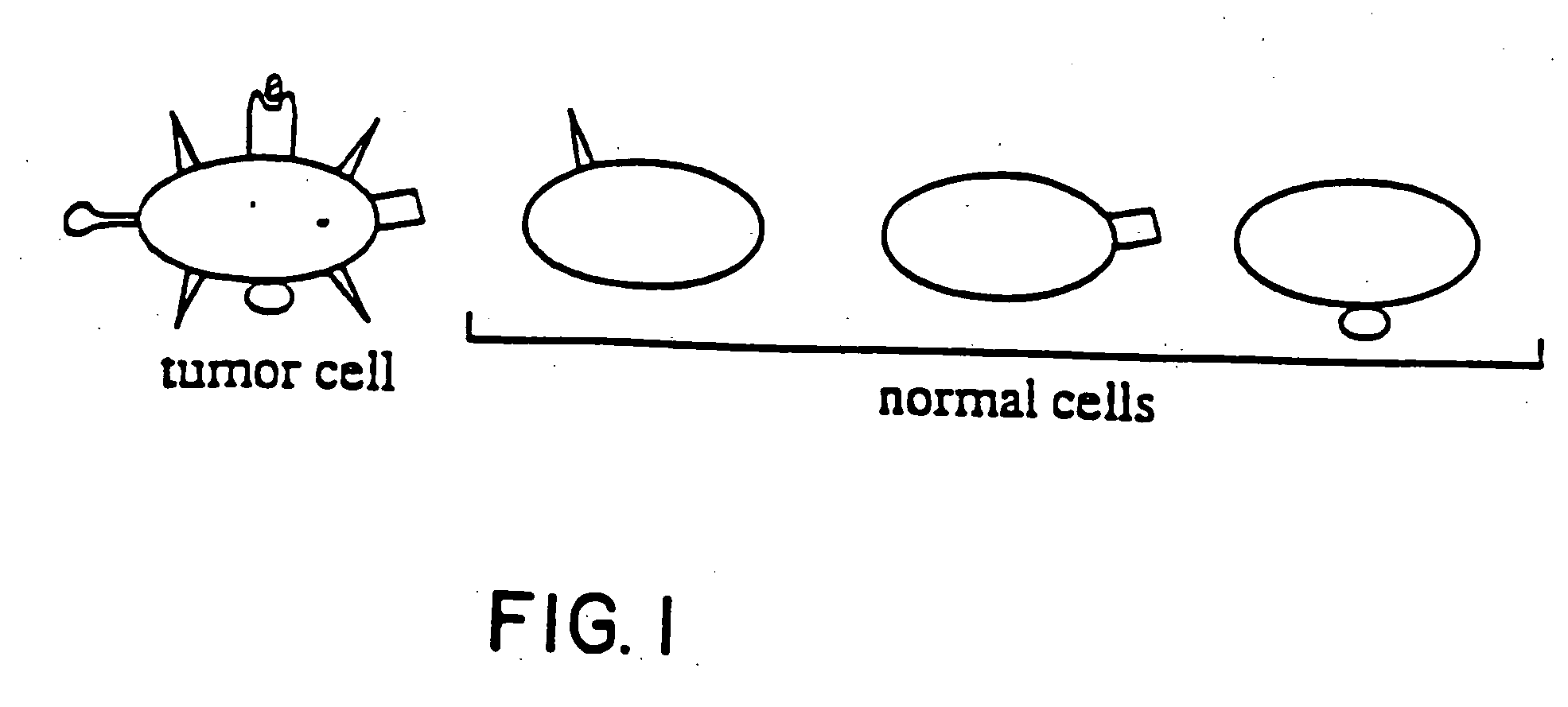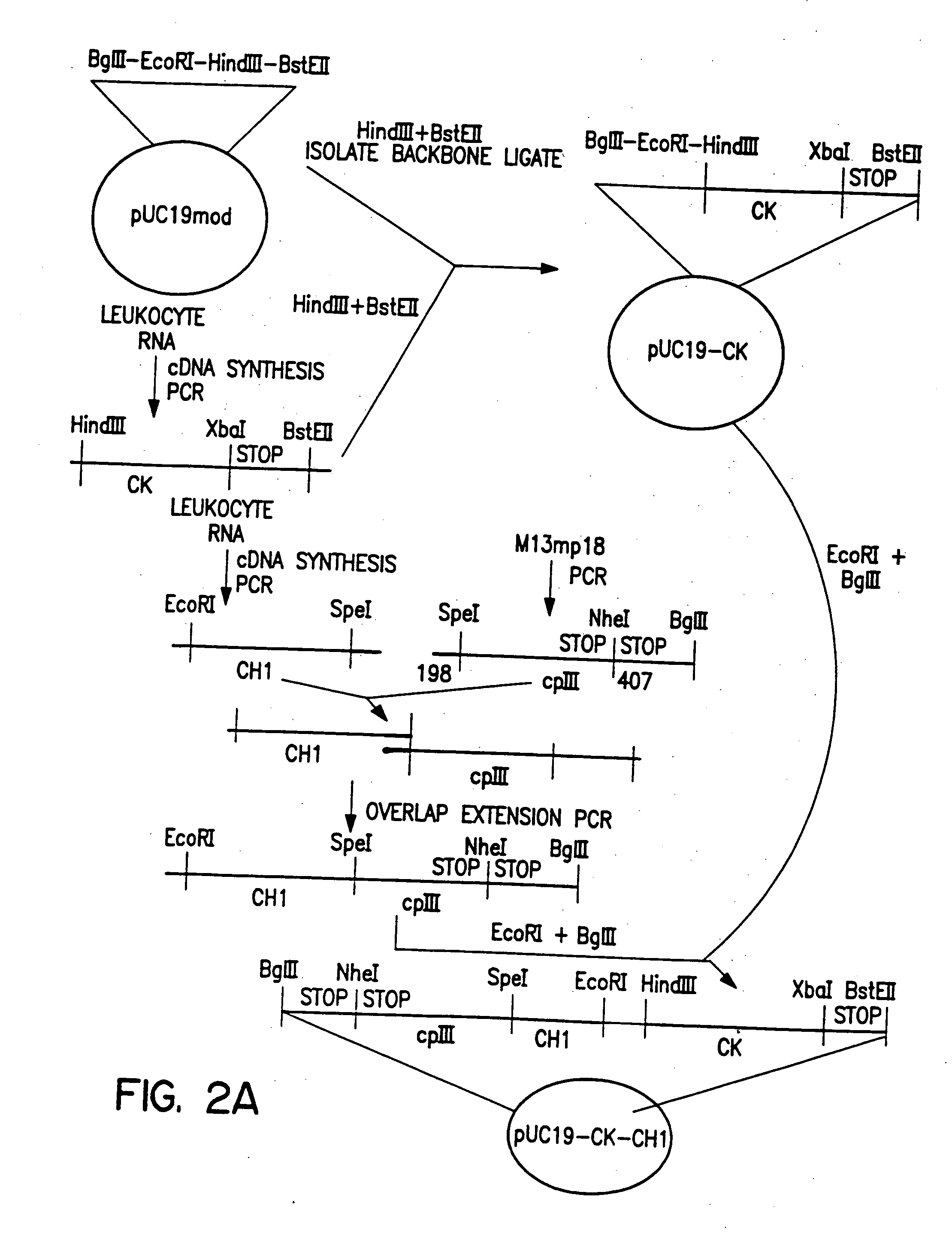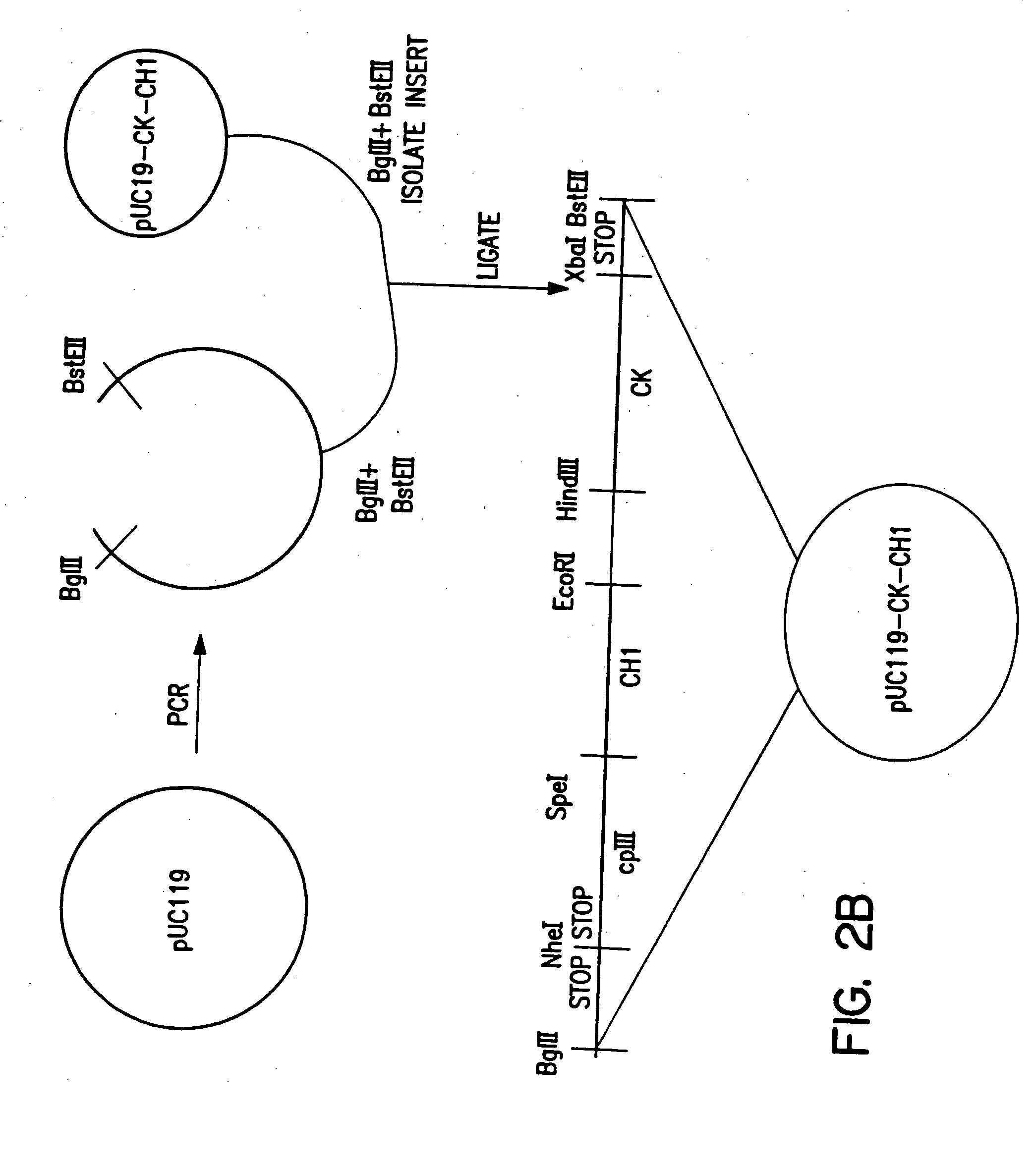Polyclonal antibody libraries
a polyclonal antibody and library technology, applied in the field of polyclonal antibody libraries, can solve the problems of inability to fully understand the mechanisms responsible for such diversity, suffer from several limitations, and inability to achieve the effect of effective monitoring and easy transfer
- Summary
- Abstract
- Description
- Claims
- Application Information
AI Technical Summary
Benefits of technology
Problems solved by technology
Method used
Image
Examples
example 1
In Vivo and In Vitro Preparation of Tumor Samples
[0080] Pathological discards of human tumors and normal tissues were obtained from Surgical Pathology at the Boston University Medical Center. Of the tumors processed, three were ovarian carcinomas, two were adenocarcinomas of the uterus, one was a mesothelioma of the peritoneum, and one was from the oral floor of a mouth tumor. Two pieces of the tumor tissue and two pieces of any available normal tissue were snap frozen in OCT (polyvinyl alcohol, benzalkonium chloride, polyethylene glycol, all in distilled H2O; Miles Laboratories; Kankakee, Ill.) for subsequent preparation of frozen (cryostat) sections. If enough normal tissue was available, some samples were snap frozen without OCT for subsequent preparation of membranes for later antibody absorption.
[0081] Tumor tissues were minced into about 1 mm3 pieces and digested for 45 minutes at 37° C. with a mixture of enzymes consisting of 1 mg / ml collagenase type IA, 1 mg / ml collagenase...
example 2
Generation and Testing of OC2 Immune Mice Antisera
[0088] Four BALB / c mice were immunized once i.p. with about 107 OC2 cells derived from the ovary. The mice were boosted i.p. on day 30 with about 5×106 OC2 tumor cells from the original preparation that had been frozen in 90% human serum / 10% DMSO, stored in liquid nitrogen, and thawed and washed before use. Antisera were obtained on days 12 and 30 post primary immunization and on day 11 post secondary immunization. Additional boosts can be administered to the mice, both i.p. and i.v., until no further increase in response is obtained. Reactivity of the antisera with the OC2 tumor cells, compared to the reactivity of pre-immune sera, is determined by solid phase ELISA using plates coated with OC2 tumor membrane preparations and alkaline phosphatase labeled goat anti-mouse immunoglobulin and nitro blue tetrazolium (NBT) plus indolyl-phosphate (BCIP) substrate (Promega; Madison, Wis.) as developing reagents.
[0089] The reactivity of th...
example 3
Generation of Bacterial and Mammalian Expression Vectors
[0090] Expression vectors, both mammalian and bacterial, were prepared in which linked combinations of VH and VL regions genes could be transferred, in bulk, from the B cells in which they are expressed into bacterial expression vectors, and without losing the combinations, into mammalian expression vectors. The H and L chains, in both vectors, are arranged in opposite transcriptional orientations with head-to-head promoters. In this way the V region gene combination could be transferred as a unit between vectors. Furthermore, as long as all vectors are circular, vectors can be opened by restriction enzymes between the VH and VL region genes to insert intervening DNA fragments such as promoters, without loss of the VH-VL combination, which remains on the same piece of DNA.
[0091] Chimeric proteins can be expressed on the surface of filamentous (M13) phage if fused to a phage coat protein such as cpIII or cpVIII. The circular p...
PUM
| Property | Measurement | Unit |
|---|---|---|
| Fraction | aaaaa | aaaaa |
| Fraction | aaaaa | aaaaa |
| Mass | aaaaa | aaaaa |
Abstract
Description
Claims
Application Information
 Login to view more
Login to view more - R&D Engineer
- R&D Manager
- IP Professional
- Industry Leading Data Capabilities
- Powerful AI technology
- Patent DNA Extraction
Browse by: Latest US Patents, China's latest patents, Technical Efficacy Thesaurus, Application Domain, Technology Topic.
© 2024 PatSnap. All rights reserved.Legal|Privacy policy|Modern Slavery Act Transparency Statement|Sitemap



